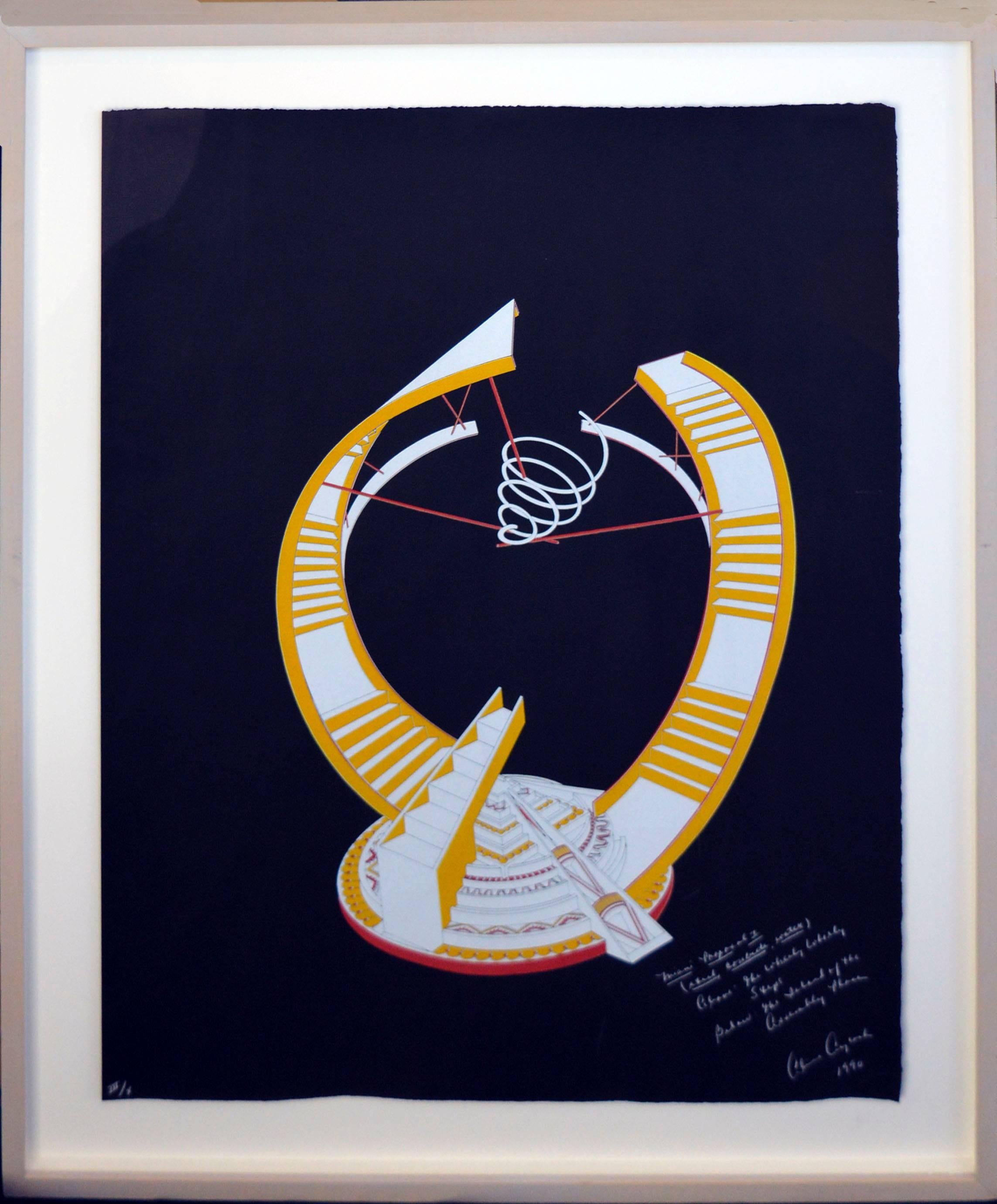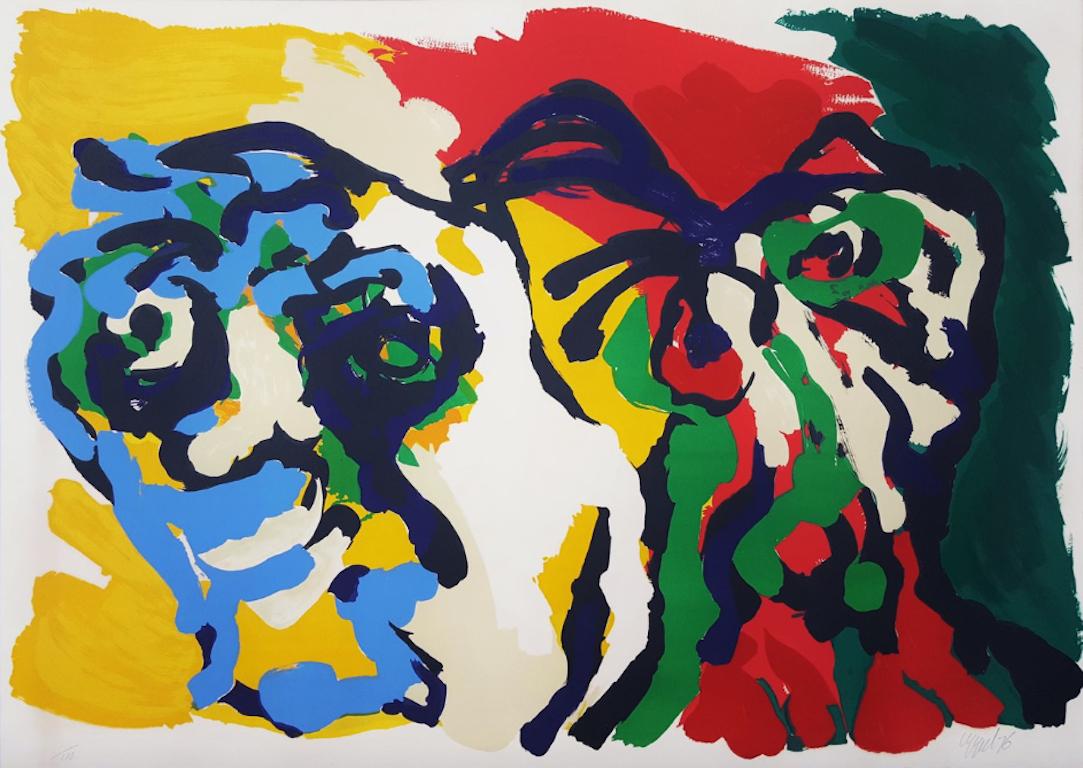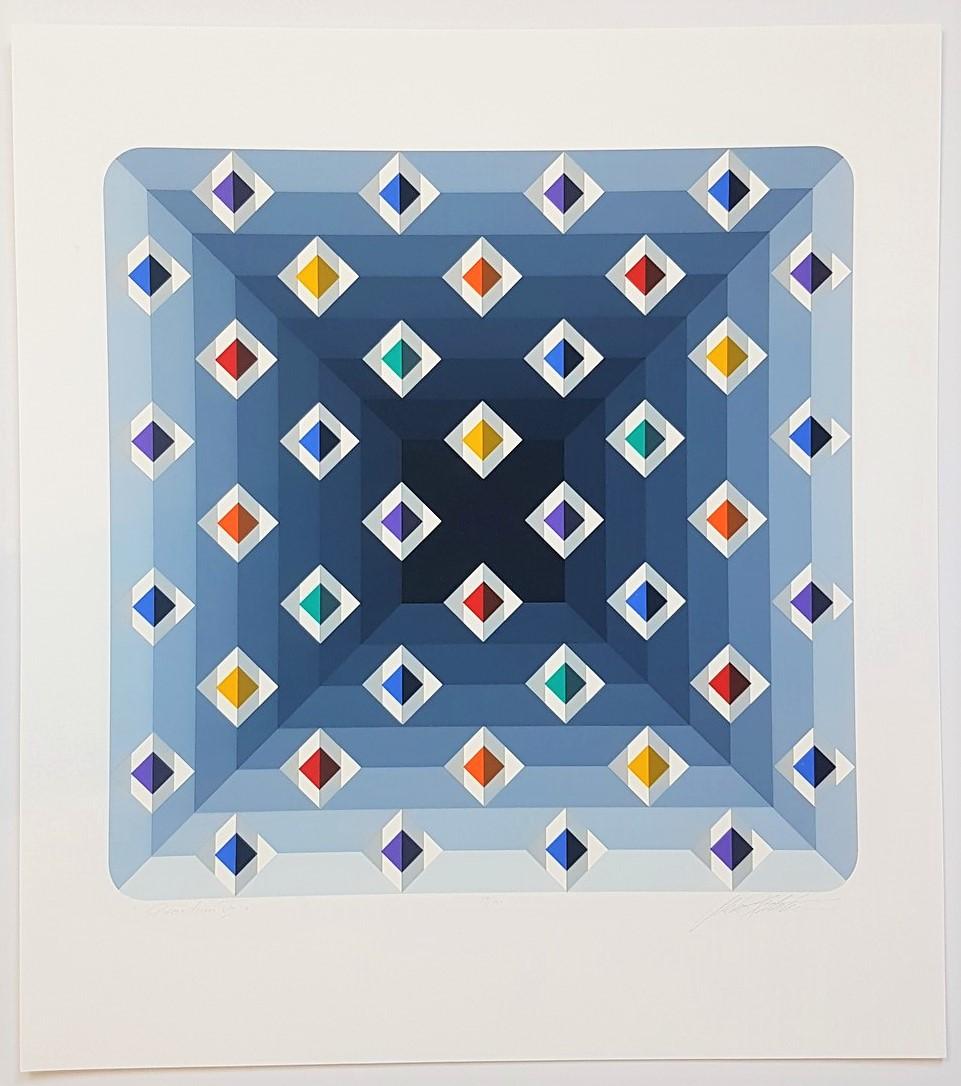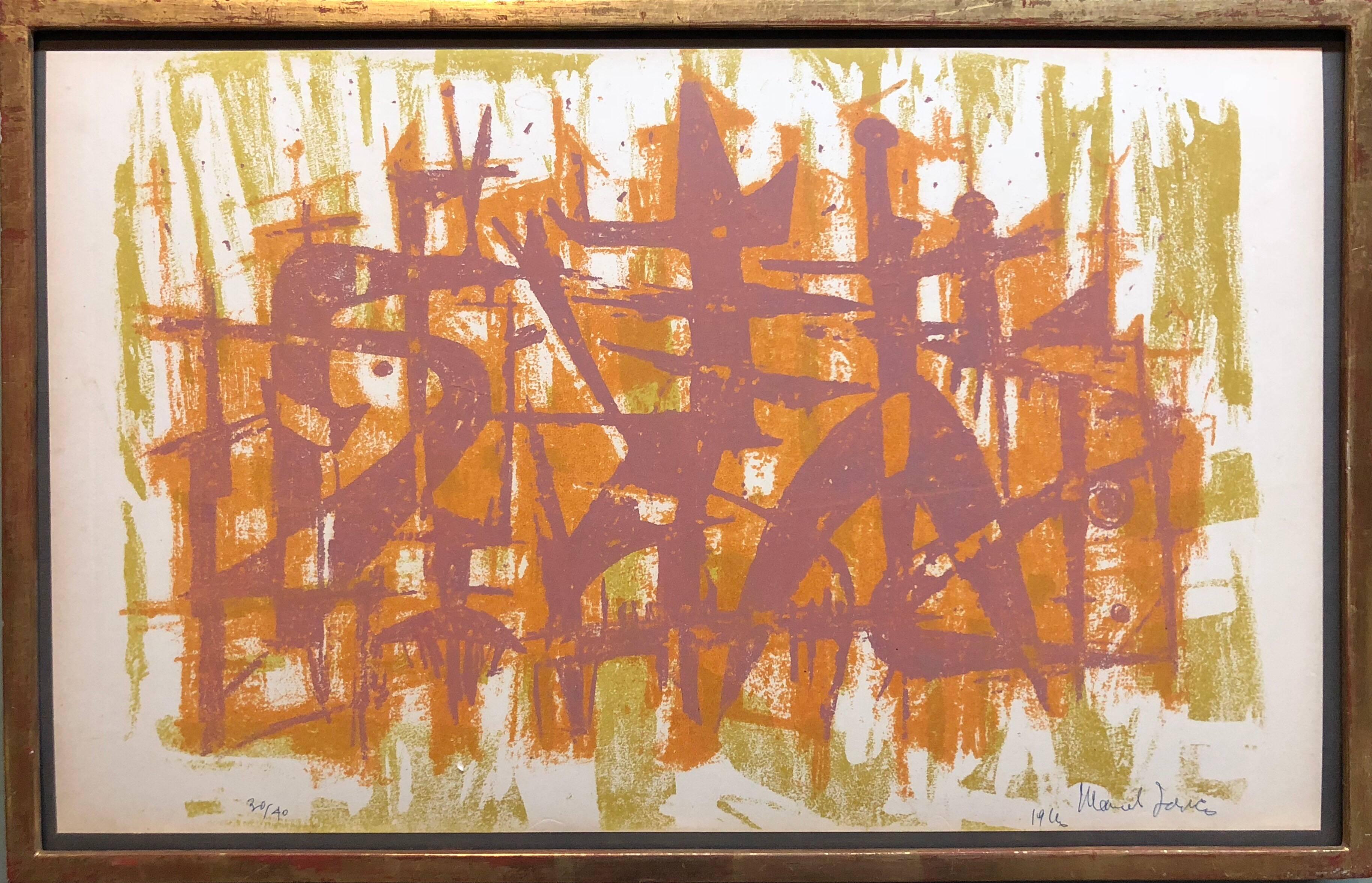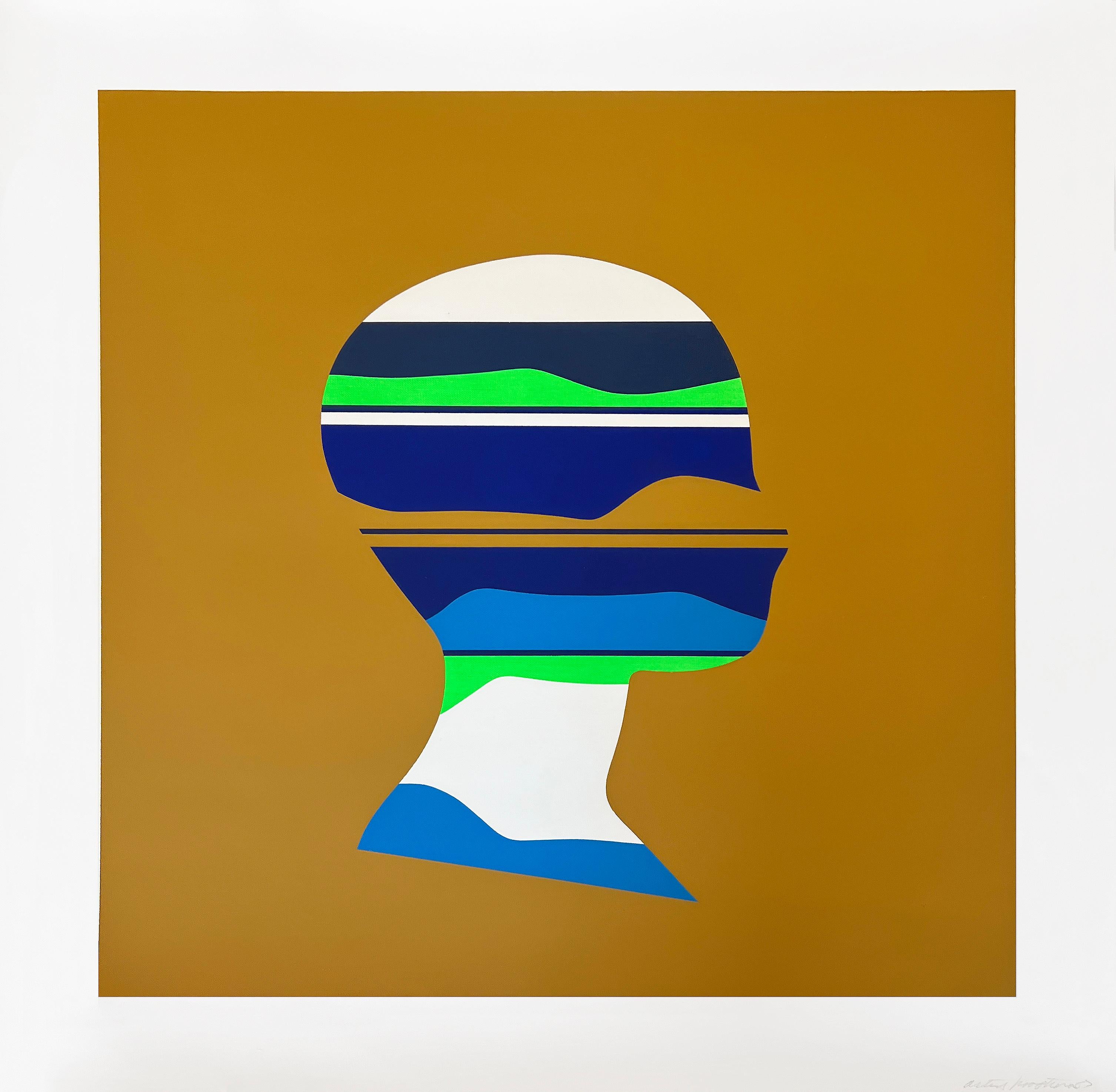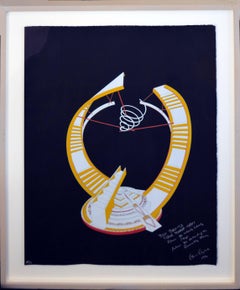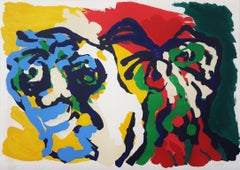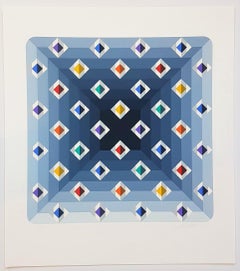
"Beter Wonen - GB Interieur" Dutch 1970s Interior Design Original Vintage Poster
View Similar Items
1 of 4
Adriaan Willem Driessen"Beter Wonen - GB Interieur" Dutch 1970s Interior Design Original Vintage Postercirca 1970
circa 1970
About the Item
- Creator:Adriaan Willem Driessen (1931 - 2009)
- Creation Year:circa 1970
- Dimensions:Height: 27.5 in (69.85 cm)Width: 19.75 in (50.17 cm)
- Medium:
- Movement & Style:
- Period:
- Condition:Excellent condition original silkscreen poster. 1/2" tear to left margin. Small creases and minor edge wear. Bright color.
- Gallery Location:Boston, MA
- Reference Number:Seller: DUL257021stDibs: LU133225735412
You May Also Like
- Vintage Silkscreen Abstract -- The Wheely Whirly StepsBy Alice AycockLocated in Soquel, CAExpressive vintage silkscreen on black paper by Alice Aycock (American, 20th Century). Hand signed and dated "Alice Aycock 1990" with hand written ...Category
1990s American Modern Abstract Prints
MaterialsScreen, Laid Paper
- Two Flowering HeadsBy Karel AppelLocated in New York, NY1976 Screenprint in colors, on heavy wove paper Sheet: 30 x 42 in. Edition of 100 Signed, dated and numbered in pencil, lower margin Unframed, very good conditionCategory
1970s Modern Abstract Prints
MaterialsPaper, Screen
Price Upon Request - Quantum VII (Abstract Geometric Composition)By Marko SpalatinLocated in Kansas City, MOMarko Spalatin Title: Quantum VII (Abstract Geometric Composition) Medium: Color silkscreen Signed, numbered and titled by hand Edition: 70 Size: 20.5 × 20.3 on 28.9 × 25.0 inches CO...Category
1980s Modern Prints and Multiples
MaterialsScreen
$780 Sale Price21% Off - Untitled, from the Album International 2 PortfolioBy Lucienne BlochLocated in New York, NYLucienne Bloch Untitled, from the Album International 2 Portfolio, 1977 Silkscreen on wove paper 11 1/2 × 11 inches Edition 1/50 Hand signed, number and dated on the front Unframed This is a rare Bloch silkscreen, signed and numbered in pencil from the limited edition of only 50. Superb provenance as it is was acquired from the original Album International Portfolio, number 1 of 50. Text from the Colophon page reads as follows: Swiss born, living in California. Limited signed edition of 50 serigraphs by Lucienne Bloch Lucienne Bloch was the daughter of famous European music composer...Category
1970s Modern Abstract Prints
MaterialsScreen
- Italian Artist Modern Silkscreen Eugenio CarmiBy Eugenio CarmiLocated in Surfside, FLEugenio Carmi is an Italian painter born in 1920 in Genoa. He studied in Turin in Felice Casorati’s studio. His experience as a graphic designer in the ‘50s, is decisive for his pictorial research, based on a rigorous geometrical structure and on a fine analysis of the perception of colors. He participated in the Venice Biennale in 1966. In 1967 he showed some electronic works in the Superlund exhibition organized by Pierre Restany in Lund, Sweden. In 1968, he introduced the “Carm-o-matic”, during the Cybernetic Serendipity show at the Institute of Contemporary Art in London. In 1973, he produced an entirely abstract 25-minute show for RAI’s Experimental Programs Service. The same year, he taught visual art seminars at the Rhode Island Institute of Design in the United States. In the ‘70s, he gave courses at the Accademia of Macerata and at the Accademia of Ravenna (Italy). He produced illustrations for three of Umberto Eco’s stories, published in Italy by Bompiani and in many other countries. The French Ministry of Education has selected them for libraries and schools in France. The most important retrospective of his work was organized by the Milan town hall in 1990, followed by a prestigious exhibition in Budapest, in the halls of the Royal Palace, in 1992. In 1991 he exhibited at the San Francisco Italian American Museum. In 1996 the “Carmi” book is published by Umberto Eco and Duncan Macmillan and presented at the Milan Triennial: a synthesis of his life. From 1957 to 1965 he will play the role of artistic director of Cornigliano's corporate magazine. During this time iron and steel are materials that Carmi meets every day and become a strong creative stimulus for him. In his first solo exhibition - presented by Gillo Dorfles in 1958 at the Galleria Numero di Firenze - the protagonists are the enamels on steel and since 1960 he made various iron and steel works welded and lithographed milk. Iron and steel is the work that in 1962 presented at Spoleto Sculpture exhibition in the city , organized by Giovanni Carandente under the V Festival of the Two Worlds . In this period, he is involved not only in the cultural politics of the Istallier ( Victor Vasarely , Umberto Eco , Max Bill , Konrad Wachsmann , Furio Colombo , Ugo Mulas , Kurt Blum , Emanuele Luzzati , Flavio Costantini ) , But also in the cultural activity of the Warehouse Gallery , which Carmi founded in Boccadasse in 1963. The Warehouse Gallery with multiples intends to propose a serial art accessible to a wider audience and is placed in international discussions on 'Multiplied Art, representing one of the most important examples. The friendship and mutual esteem that binds him to Umberto Eco has two very important fruits at this time: Children's Fables and Stripsody . In 1966 for the publishing house Bompiani came three Eco fables illustrated by Carmi and then re-introduced in 1988 with new Carmi illustrations and a fable more. Stripsody is a musical project on cartoon sound, designed and then interpreted by the genius singer Cathy Berberian, with Eco texts and illustrations by Carmi. Eugenio Carmi, who is always fascinated by the new technological possibilities in the 1960s and 1970s, is the author of experimental cinematic and audiovisual artwork and also realizes those who will call electrical imagery signals that will also be at the center of a provocative installation on the streets of the city of Caorle . It is at this stage that in 1966 he was at the XXXIII edition of the Venice Biennale with the electronic work SPCE (electronically controlled polycyclic structure), which is also the invitation of Pierre Restany to participate with electronic works at the SuperLund exhibition in Sweden. In 1971, he moved to Milan with his family, where he established his study. At this point, though with incursions in other parallel fields such as the realization of mirrors and stained glass, painting, and sporadically sculpture - which had approached the Istal period - is at the center of its activity. It is at the beginning of the seventies that it deepens the geometric language, already open with some previous experiences (accident prevention signs for the Italsider, some multiples for the Deposit and electrical imagery signals), replacing it with the informal one. In 1979 he produced a magazine - which will remain the same number - by the name of Res Publica , for which he receives the contributions of intellectuals and artists, including Umberto Eco, Antonio Porta , Gillo Dorfles , Richard Paul Lohse...Category
1980s Modern Abstract Prints
MaterialsScreen
- DADA Artist Abstract Figures Silkscreen Lithograph Print Israeli ModernistBy Marcel JancoLocated in Surfside, FLMarcel Janco, was a Romanian and Israeli visual artist, architect and art theorist. He was the co-inventor of Dadaism and a leading exponent of Constructivism in Eastern Europe. In...Category
20th Century Modern Abstract Prints
MaterialsScreen, Lithograph
Recently Viewed
View AllMore Ways To Browse
Retro Interior Design
Vintage Interior
Interior Vintage
Vintage Interior Design
Vintage Poster Design
Vintage Design Amsterdam
Dutch Antique Art
Dutch Orange
Dutch Willem
Amsterdam Vintage
The Vintage Poster Gallery
Retro Poster Dealers
Dutch Screen
Dealers Dutch
Holland Poster
Interieurs Modernes
Vintage Dutch Poster
Vintage Holland Poster
